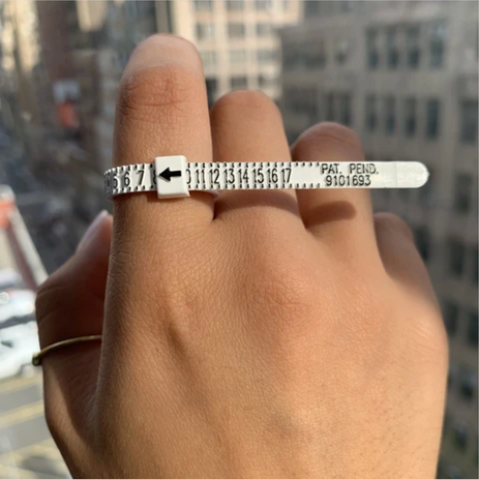Cut
Baguette diamonds are slender and long in a rectangular shape, commonly reaching a ratio of around 5:1 in length to width. It is a member of the step-cut diamond family with perfectly square corners and 14 faceted cuts made as straight lines. These long and narrow facet lines focus more on clarity and a depth of clear light reflection over the sparkle of the brilliance cut.
They come in two shapes: straight or tapered edges. For straight baguettes, all edges are parallel to each other. In tapered baguettes, the long sides angle inward on one of the short edges, creating a narrowed look.
The cut of a baguette diamond is one of its most important features. This is because step cuts are more likely to show inclusions than a brilliant cut that is excellent at hiding them. This, combined with the very few facet cuts, means that an excellent cut is standard use for jewelry. Also, since there are so few cuts made, the symmetry of the facets becomes very important since any deviation from perfectly symmetrical will be more noticeable to the naked eye.
Color
Baguette cut diamonds lack the depth required to hide more body color in a diamond, so they typically reveal color more compared to brilliant cut diamonds. The shallow cut combined with the style and minimal number of cuts means that color will likely be easily visible to the naked eye.
In order to get a white, colorless look to a baguette diamond as they appear face up, a G or H color rating is probably going to be the lowest you’d want to consider. However, because the stones are predominantly used as side and accent stones, it’s important that they match closely in color to the center stone. You don’t want diamonds that show noticeably less or more color than the center stone as that will impair the overall look of the ring.
Clarity
Next to cut, clarity is going to be the most important quality to consider. The discussion about clarity follows the same lines of reasoning as cut and color – since there are so few facet cuts and they are applied to achieve a clear light reflection, even minute flaws will be far more noticeable.
Since even minimal inclusions like carbon crystals and feathers will show up easily, a higher clarity grade will be critical to achieve an eye clean look for the baguette diamond. Some may think that because these are smaller accent or side stones, their size will help make these imperfections less apparent. It’s simply not the case as a result of their minimalist, streamlined cut. So, at least a VS2 clarity grade is important for a clear, beautiful diamond.
Carat
Baguette cut diamonds are very rarely used as center stones and are mostly made available in smaller carat weights to serve as side and accent stones. The smaller size does help ensure their quality though since it is easier to cut around imperfections and not have them present in the final stone.
Interestingly for baguettes, they are purchased in sets since they are used in multiples of even numbers on a ring to create the same look on either side of a center stone. So you will often see an indication of ‘tcw’ next to the numerical amount, signifying total carat weight. While it should be standard practice that the ‘tcw’ should split fairly evenly between the two or more baguettes, they may naturally differ by the smallest amount.






